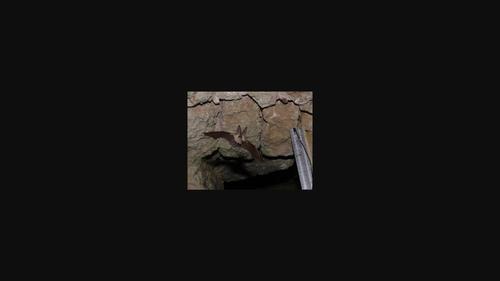当前位置:
X-MOL 学术
›
Remote Sens. Ecol. Conserv.
›
论文详情
Our official English website, www.x-mol.net, welcomes your feedback! (Note: you will need to create a separate account there.)
Camera traps with white flash are a minimally invasive method for long-term bat monitoring
Remote Sensing in Ecology and Conservation ( IF 5.5 ) Pub Date : 2021-10-27 , DOI: 10.1002/rse2.243 Gabriella Krivek 1 , Brian Schulze 2 , Peter Zs. Poloskei 3 , Karina Frankowski 1 , Xenia Mathgen 1 , Aenne Douwes 1 , Jaap Schaik 1
Remote Sensing in Ecology and Conservation ( IF 5.5 ) Pub Date : 2021-10-27 , DOI: 10.1002/rse2.243 Gabriella Krivek 1 , Brian Schulze 2 , Peter Zs. Poloskei 3 , Karina Frankowski 1 , Xenia Mathgen 1 , Aenne Douwes 1 , Jaap Schaik 1
Affiliation

|
Camera traps are an increasingly popular survey tool for ecological research and biodiversity conservation, but studies investigating their impact on focal individuals have been limited to only a few mammal species. In this context, echolocating bats are particularly interesting as they rely less on vision for navigation, yet show a strong negative reaction to constant illumination. At hibernacula, camera traps with white flash could offer an efficient alternative method for monitoring threatened bat species, but the potential negative impact of white flash on bat behavior is unknown. Here, we investigate the effect of camera traps emitting white flash at four hibernation sites fitted with infrared light barriers, infrared video cameras, and acoustic recorders over 16 weeks. At each site, the flash was turned off every second week. We quantified whether flash affected (1) nightly bat passes using generalized linear mixed models, (2) flight direction of entering bats using permutational multivariate analyses, and (3) latency of the first echolocation call after the camera trap trigger using randomization tests. Additionally, we quantified and corrected for the potential impact of confounding factors, such as weather and social interactions. Overall, white flash did not influence short- or long-term bat activity, flight direction or echolocation behavior. A decrease in nightly bat activity was observed with an increasing proportion of hours with rain. Moreover, flight direction was affected by the presence of other bats, likely due to chasing and avoidance behavior. Our findings highlight the potential of camera traps with white flash triggered by infrared light barriers as a minimally invasive method for long-term bat population monitoring and observation of species-specific phenology. Such automated monitoring technologies can improve our understanding of long-term population dynamics across a wide range of spatial-temporal scales and taxa and consequently, contribute to data-driven wildlife conservation and management.
中文翻译:

带有白色闪光灯的相机陷阱是一种用于长期蝙蝠监测的微创方法
相机陷阱是生态研究和生物多样性保护越来越受欢迎的调查工具,但调查它们对焦点个体影响的研究仅限于少数哺乳动物物种。在这种情况下,回声定位蝙蝠特别有趣,因为它们较少依赖视觉进行导航,但对持续照明表现出强烈的负面反应。在hibernacula,带有白色闪光的相机陷阱可以提供一种有效的替代方法来监测受威胁的蝙蝠物种,但白色闪光对蝙蝠行为的潜在负面影响尚不清楚。在这里,我们在 16 周内调查了在四个配备红外光屏障、红外摄像机和录音机的冬眠地点发射白色闪光的相机陷阱的影响。在每个站点,闪光灯每两周关闭一次。我们量化了闪光是否影响 (1) 夜间蝙蝠通过使用广义线性混合模型,(2) 使用置换多变量分析进入蝙蝠的飞行方向,以及 (3) 使用随机测试触发相机陷阱后第一次回声定位呼叫的延迟。此外,我们量化并纠正了混杂因素的潜在影响,例如天气和社交互动。总体而言,白色闪光不影响短期或长期蝙蝠活动、飞行方向或回声定位行为。随着降雨时间比例的增加,观察到夜间蝙蝠活动减少。此外,飞行方向受到其他蝙蝠存在的影响,可能是由于追逐和回避行为。我们的研究结果强调了红外光屏障触发的白色闪光相机陷阱作为一种微创方法用于长期蝙蝠种群监测和物种特异性物候观察的潜力。这种自动监测技术可以提高我们对各种时空尺度和分类群的长期种群动态的理解,从而有助于数据驱动的野生动物保护和管理。
更新日期:2021-10-27
中文翻译:

带有白色闪光灯的相机陷阱是一种用于长期蝙蝠监测的微创方法
相机陷阱是生态研究和生物多样性保护越来越受欢迎的调查工具,但调查它们对焦点个体影响的研究仅限于少数哺乳动物物种。在这种情况下,回声定位蝙蝠特别有趣,因为它们较少依赖视觉进行导航,但对持续照明表现出强烈的负面反应。在hibernacula,带有白色闪光的相机陷阱可以提供一种有效的替代方法来监测受威胁的蝙蝠物种,但白色闪光对蝙蝠行为的潜在负面影响尚不清楚。在这里,我们在 16 周内调查了在四个配备红外光屏障、红外摄像机和录音机的冬眠地点发射白色闪光的相机陷阱的影响。在每个站点,闪光灯每两周关闭一次。我们量化了闪光是否影响 (1) 夜间蝙蝠通过使用广义线性混合模型,(2) 使用置换多变量分析进入蝙蝠的飞行方向,以及 (3) 使用随机测试触发相机陷阱后第一次回声定位呼叫的延迟。此外,我们量化并纠正了混杂因素的潜在影响,例如天气和社交互动。总体而言,白色闪光不影响短期或长期蝙蝠活动、飞行方向或回声定位行为。随着降雨时间比例的增加,观察到夜间蝙蝠活动减少。此外,飞行方向受到其他蝙蝠存在的影响,可能是由于追逐和回避行为。我们的研究结果强调了红外光屏障触发的白色闪光相机陷阱作为一种微创方法用于长期蝙蝠种群监测和物种特异性物候观察的潜力。这种自动监测技术可以提高我们对各种时空尺度和分类群的长期种群动态的理解,从而有助于数据驱动的野生动物保护和管理。



























 京公网安备 11010802027423号
京公网安备 11010802027423号